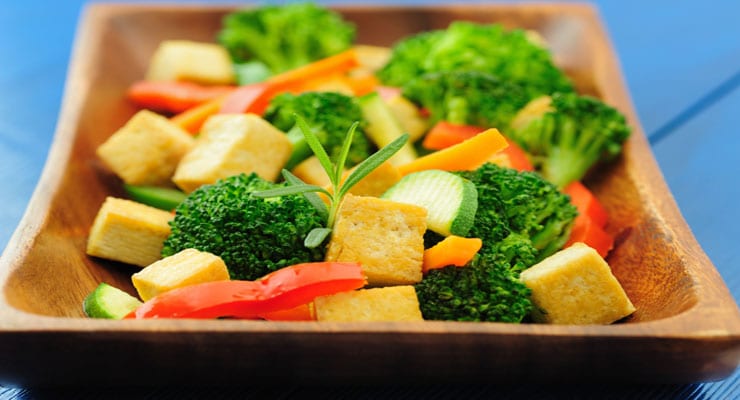
Easy Ways to Get Protein and Nutrients as a Vegetarian—World Vegetarian Day
My twin daughters’ best friend came back from summer sleep away camp and was excited to tell me that she was a vegetarian. She knew I was a registered dietitian and she was proud of her efforts to avoid meat and wanted them to be acknowledged.
Interestingly, after spending the night at our house, I realized that what she called being a “vegetarian” really meant that she was existing on foods like pretzels, pasta, chips, a lot of other processed carbohydrates and not much else—certainly not a Mom’s dream. Sure, she may be a vegetarian, but clearly this doesn’t mean she necessarily eats a healthy diet. This is a common theme that we see when both Moms and kids come to us with great intentions to be vegetarians—they fall short on nutrients including vitamins, minerals, fiber and especially protein.
So in honor of World Vegetarian Day (October 1), and World Vegetarian Month (October), here are a few pointers to keep in mind if you or your kids are considering becoming a vegetarian.
1. Remember what the focus of the vegetarian diet should be—Vegetables (a plant-based diet)! As authors of The Nutrition Twins’ Veggie Cure, we live for vegetables (and fruits, for that matter) since they are nutrient power-houses, packed with vitamins, minerals, fiber and disease-fighting phytonutrients. Every vegetable helps the body in a different way, whether strengthening bones, boosting mood, fighting stress, creating glowing skin, beating the bloat, helping fight cancer, heart disease, etc., and the more vegetables, the better.
2. Ensure you’re following a healthy vegetarian diet by choosing whole grains—these are closest to nature and the least processed—think whole grain breads, brown rice, quinoa, bulgur, oatmeal and millet. They’ll pack in the most nutrition and keep blood sugar and energy levels stable, which is especially important for kids who are prone to melt-downs.
3. Focus on getting protein at every meal. It’s important for satiety, muscle and tissue growth, development and recovery and so much more.
Here are some good choices:
• Eggs: They’re satisfying and a great way to start the morning. Let your kids decorate their omelet with their favorite veggies—they can make a face out of veggies and eat it with a whole grain English muffin.
• Beans: Let kids experiment and make their own bean tacos and burritos. They have fun sprinkling on the chopped lettuce, tomato, beans and salsa and adding all the fixins’ themselves. Also try bean dips—kids love dunking they’re veggies and they’ll get extra fiber and protein with the beans.
• Nuts: Nutrient-dense and a good source of protein and fiber, nuts are one of the easiest ways for kids to get extra nutrition. Pistachios are a favorite of ours and Tammy’s kids for so many reasons. They’re the perfect non-perishable on-the-go fuel for kids and adults, and they’re one of the nuts highest in protein and fiber and also one of the lowest in fat and calories, plus pistachios, aka the “skinny nut,” have about 49 nuts per serving (that’s a lot of nuts). They taste great so everyone is happy, and we also love that they are “activity foods” that keep the kids’ hands busy – they love to crack into pistachios.
• Seeds: Kids love to crunch on these in trail mix with dried fruits and cereal.
• Milk: An easy way for many kids to get extra protein and calcium. Seamlessly add to smoothies and cereals. Stick to low-fat and nonfat varieties to keep saturated fat to a minimum.
• Edamame: Makes a great snack or appetizer and great in stir-fries and kids love them as much as adults.
• Tofu: Blend into smoothies for a quick way to boost protein.
• Hummus: Great for dipping veggies or whole wheat pita bread.
• Cottage cheese: Serve alongside fruit for a delicious sweet and salty combo
• Yogurt: Perfect to serve with breakfast, lunch or at snack time. To boost protein even more, choose Greek yogurt which can have as much as 17 grams protein/ 6 ounces!
• Quinoa: Satisfying grain that adds pizzazz to everything from salads to soups (It has 8 grams protein/ cup cooked)




